United States
Diverse Cultures & Magnificent National Parks
The United States offers a wealth of travel destinations that cater specifically to retirees, each region offering its own unique charm. Whether you're drawn to the pristine beaches of the East Coast, the breathtaking landscapes of the West Coast, or the vibrant culture of the Southeast, there's an ideal destination waiting for you. Let's explore the most popular tourist destinations in the United States preferred by retirees organized by region, to inspire your next vacation.

Photo by Zack Frank / Adobe Stock | The Northeast part of the U.S. is renownded for it's historic appeal, diverse cultures and contributions to art, fashion, and culinary excellence. From the bright lights of Broadway, to awe-inspiring Niagra Falls, New York has much to offer. Or take delight in the charm of New England towns that invite you to take a step back-in-time. |
| Wander the cobblestone streets of Boston, indulge in fresh seafood, and witness the stunning fall foliage that blankets the region. Explore the picturesque coastal towns of Maine and breathe in the refreshing coastal air. Discover New England vacations destinations.
|
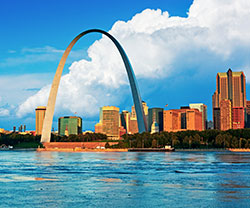
Photo by Allan / Adobe Stock | The Midwest offers a great variety of intriguing travel destinations. Also known as "The Heartland", it includes states such as Illinois, Indiana, Iowa, Kansas, Michigan, Minnesota, Missouri, Nebraska, North Dakota, Ohio, South Dakota, and Wisconsin. Some of the most popular midwest vacation destinations are Wisconsin Dells, Mackinac Island, Chicago, as well as St. Louis.
|
| Picture rolling prairies with golden waves of grass, serene lakes reflecting the colors of the sky, and charming small towns exuding nostalgic charm. Discover culinary delights that celebrate the region's rich agricultural heritage, from farm-to-table dishes to comforting local specialties. Uncover the hidden treasures of the Midwest, where charm, diverse cultures, and breathtaking scenery await your discovery. Explore the most popular Midwest vacation locations. |
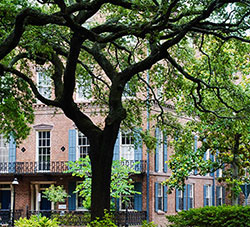
Photo by Alix Greenman / Unsplash | The "Deep South" region of the United States is considered a subregion of the Southeast. While there is some overlap between the two regions, the Deep South typically includes Alabama, Georgia, Louisiana, Mississippi and South Carolina. The Deep South carries a distinct identity that is deeply rooted in its historical significance, unique traditions, and warm hospitality.
|
| From the plantations that tell stories of a tumultuous past to the soulful melodies of blues and jazz that emanate from its cities, the Deep South offers a captivating tapestry of experiences that continue to shape the region's identity. Learn more about the most popular Deep South travel options. |

Photo by Mark S / Unsplash | The Southeast region of the United States offers a wide variety of cultural, historical and recreational experiences. It encompasses states such as Alabama, Florida, Georgia, Kentucky, Mississippi, North Carolina, South Carolina, and Tennessee. For truly southern charm, begin your exploration in historic Charleston, South Carolina, where you can meander through its cobblestone streets and delight in colorful colonial architecture. Make your way to Savannah, Georgia, and experience southern charm and hospitality. |
| For nature enthusiasts, the Great Smoky Mountains National Park, spanning Tennessee and North Carolina, offers breathtaking vistas, scenic trails, and abundant wildlife. And if you're seeking pristine beaches and vibrant coastal cities, look no further than the Gulf Coast of Florida, Alabama, and Mississippi, with soft sand, turquoise water, and lively beach towns. Explore the most popular Southest vacation and travel options.
|
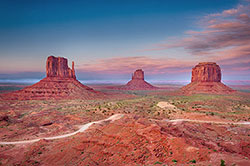
Photo by Fyle / Adobe Stock | The Southwest region of the United States include Arizona, New Mexico, Nevada, Utah, Colorado and Texas. It is known for its awe-inspiring landscapes, rich cultural heritage, and diverse outdoor experiences. From the dramatic red rock formations of the Grand Canyon to the mystical desert landscapes of Monument Valley, the Southwest offers a captivating journey through natural wonders.
|
| Delve into Native American history and explore ancient ruins at sites like Mesa Verde National Park. Immerse yourself in the vibrant arts and culinary scene of Santa Fe, with its renowned art galleries and flavorful Southwestern cuisine.
Learn more about Southwest Vacation and travel destinations. |

Photo by Igor Shalyminov / Unsplash | The West Coast of the United States is an enticing destination for retirees seeking a diverse range of experiences. From the iconic cityscapes of San Francisco, Los Angeles and Seattle to the breathtaking natural wonders of Yosemite National Park and Olympic National Park, the region offers an abundance of attractions. Retirees can immerse themselves in vibrant cultural scenes, exploring renowned museums, enjoying world-class dining, and savoring the coastal charm of towns along the Pacific shoreline. |
| Outdoor enthusiasts can hike through ancient redwood forests, witness majestic waterfalls, and bask in the beauty of pristine beaches. The West Coast of the United States is a haven for retirees seeking natural beauty and diverse cultural experiences. California's allure and the mesmerizing landscapes of the Pacific Northwest await your exploration. |
Retirees seeking exciting and fulfilling vacations in the United States have an abundance of options to explore, region by region. From the sun-soaked beaches of Florida to the breathtaking landscapes of the Pacific Northwest and the vibrant music scenes of Nashville, Branson, Kansas City, and Cleveland, each region offers a distinct experience that caters to the unique preferences of retirees. So, pack your bags, hit the road, and embark on an unforgettable journey to discover the top travel destinations preferred by retirees in the United States. Adventure awaits!
Best Time to Visit:
The United States is a vast countrie, so temperatures may vary greatly by location, but in general, both Spring (March to May) and Fall (September to November) months offer pleasant weather and fewer crowds, making them the best times to visit various regions in the United States. However, keep in mind that specific events, festivals, and regional weather variations can impact the ideal time to visit certain areas.
Spring (March to May):
Spring is an excellent time to visit the United States as the weather starts to warm up, and nature comes to life with blooming landscapes and vibrant colors. The average temperature varies across different regions, but it generally ranges between 50°F to 70°F (10°C to 21°C). This season is particularly ideal for exploring popular cities like New York, Los Angeles, and Chicago, as well as natural wonders such as the Grand Canyon and Yellowstone National Park.
Summer (June to August):
Summer is a peak tourist season in the United States due to its warm and sunny weather. Coastal regions, such as California, Florida, and the East Coast, are popular destinations for beachgoers and vacationers. However, some areas can experience high temperatures and humidity. The average Summer temperature ranges between 70°F to 90°F (21°C to 32°C). If you visit during this season, consider visiting national parks, mountainous regions, or cooler cities in the northern states to escape the heat.
Fall (September to November):
Autumn is another excellent time to visit the United States, with pleasant temperatures and the beauty of fall foliage in many regions. This season is perfect for exploring cities, national parks, and cultural attractions with fewer crowds compared to summer. The average Fall temperature ranges between 50°F to 70°F (10°C to 21°C). Fall is a fantastic time to visit places like New England, where you can experience stunning autumn colors, or cities like Washington D.C. during the Cherry Blossom Festival.
Winter (December to February):
Winter in the United States offers diverse experiences depending on the region. Northern states and mountainous areas experience colder temperatures and winter sports opportunities, while southern states and coastal regions have milder weather. The average Winter temperature ranges between 40°F to 60°F (4°C to 15°C). Winter is a great time to visit more southern regions like Florida, Hawaii, Arizona, Texas or Calfornia if you want sunshine, or head to ski resorts in Colorado and Utah for winter sports enthusiasts.
Travel Planning Tips for the United States:
Plan Ahead: Research and plan your itinerary in advance to make the most of your time in the United States. Consider the locations you want to visit, the duration of your stay, and any specific attractions or activities you don't want to miss.
Cash and Currency: The United States uses the United States Dollar (USD) as its currency. Make sure to have some cash on hand for small expenses, but most places accept credit cards.
Travel Insurance: Ensure that you have comprehensive travel insurance that covers medical expenses, trip cancellation, and any potential emergencies. Review the policy details and know how to access medical assistance if needed.
Language, Local Customs, and Etiquette: English is the primary language spoken in the United States. Learning a few basic phrases can be helpful, especially in non-tourist areas. Respect local customs and traditions, and be mindful of cultural differences when interacting with locals. Adhere to local laws and regulations, including smoking restrictions, alcohol consumption laws, and photography rules in certain areas.
Stay Hydration: Drink plenty of fluids and carry a water bottle, especially during hot and humid weather or if you engage in outdoor activities.
Sun Protection: The United States experiences varying climates, so it's important to protect yourself from the sun. Wear sunscreen, a hat, and sunglasses, and seek shade during the hottest hours of the day to prevent sunburn and dehydration.
Travel Documents: Ensure you have a valid passport. Check visa requirements based on your nationality and the purpose of your visit to the United States. Make sure you have all the necessary travel documents, including your visa and any supporting documentation.
Remember to check the latest travel advisories and guidelines from the U.S. Department of State and other relevant authorities before your trip, as situations and requirements may change.
Accommodations:
The United States offers a wide range of accommodation options, including hotels, motels, vacation rentals, and bed-and-breakfast establishments. Book in advance, especially during peak travel seasons or major events, to secure the best deals and availability.
- Hotels: Hotels are available in most cities and tourist destinations, ranging from budget-friendly options to luxury accommodations.
- Motels: Motels are commonly found along highways and offer convenient and affordable lodging options for travelers.
- Vacation Rentals: Vacation rentals, available through platforms like Airbnb and Vrbo, provide options for larger groups or those seeking a more home-like experience.
- Bed-and-Breakfast (B&B) Establishments: B≈Bs offer a cozy and personalized experience, often with breakfast included in the stay.
Transportation:
The United States has an extensive transportation network that varies depending on the region and city. Consider your preferred mode of transportation based on the distance and convenience of your chosen destinations.
- Domestic Flights: If you're traveling long distances between states or regions, consider domestic flights for faster connections. Major cities have airports with both full-service and low-cost airlines operating domestic routes.
- Trains: Amtrak is the national passenger train service, offering routes between major cities and some scenic routes. However, train options are limited compared to other transportation modes in the United States.
- Buses: Buses are a popular mode of transportation for both short and long distances, especially for budget-conscious travelers. Companies like Greyhound and Megabus operate intercity bus services connecting various cities and towns.
- Rental Cars: Renting a car is a convenient option if you plan to explore rural areas and have the freedom to travel at your own pace. Be aware of parking regulations, toll roads, and traffic rules, especially in busy urban centers.
- Taxis and Ride-Sharing: Taxis and ride-sharing services like Uber and Lyft are widely available in major cities and urban areas. They offer a convenient way to get around within cities, but fares may vary depending on demand and location.
- Public Transportation: Major cities in the United States have comprehensive public transportation systems, including buses, subways, and light rail. Purchase travel cards or passes for cost-effective and efficient commuting.
Safety Tips:
- Safety Precautions: The United States is generally a safe country, but it's essential to take precautions, especially in urban areas or crowded tourist spots. Be aware of your surroundings, keep an eye on your belongings, and avoid poorly lit or isolated areas at night.
- Medical Facilities: Familiarize yourself with the location of medical facilities, clinics, and hospitals near your travel destinations. Keep a list of emergency contact numbers and addresses readily available.
- Prescription Medications: If you take prescription medications, ensure you have an ample supply for the duration of your trip. Carry them in their original packaging, along with copies of prescriptions, in case you need to refill or replace them while in the United States.
- Hygiene and Food Safety: Practice good hygiene by regularly washing your hands with soap and water, or using hand sanitizer when handwashing facilities are not available. The United States maintains a high standard of sanitation, particularly in food establishments. Food businesses are regulated and inspected regularly to ensure they comply with health and safety standards. If you have specific dietary requirements or allergies, communicate your needs to restaurant staff, who are usually accommodating and attentive to customer preferences.
- Stay Hydrated: Maintain adequate hydration by drinking plenty of water, especially in warmer months or when participating in outdoor activities. Carry a refillable water bottle and stay hydrated throughout the day.
- COVID-19 Precautions: Stay informed about the latest COVID-19 guidelines and restrictions in the United States. Follow local regulations, wear masks where required, practice social distancing, and maintain good hand hygiene.
- Emergency Numbers: Familiarize yourself with the emergency contact numbers in the United States, including 911 for emergencies, local police, and medical services.
0. - Travel Advisories Stay updated on current events, local regulations, and any travel advisories when traveling abroad. Visit the US Government State Department Travel Advisories web site to check on the status of your destination.
- Enroll in the STEP Program: Travelers are also urged to enroll in the U.S. State Department's Smart Traveler Enrollment Program (STEP) to receive security messages and to make it easier to locate them in an emergency. The Department uses these security messages to convey information about terrorist threats, security incidents, planned demonstrations, natural disasters, etc. In an emergency, please contact the nearest U.S. Embassy or consulate or call the following numbers: 1 (888) 407-4747 (toll-free in the United States and Canada) or 1 (202) 501-4444 from other countries.
Note: The information provided here is a general overview of travel planning tips for the United States. Specific details may vary based on the state, city, or region you plan to visit. Always research and stay updated on the latest information before traveling to any destination.
| |
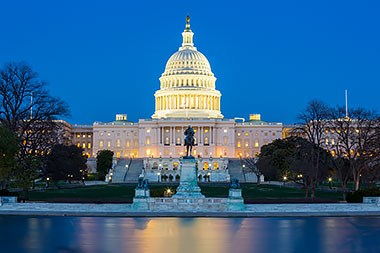 Photo by Vichie81 / Adobe Stock
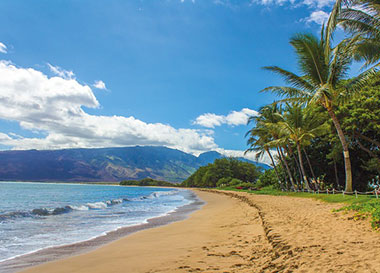 Mauai, Hawaii
Photo by Bettina Nørgaard / Pixabay
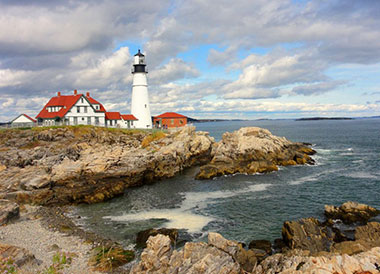 Portland Head Light, Maine Photo by Charaine Anderson
 Mackinac Island, Michigan
Photo by Michael Deemer / iStock
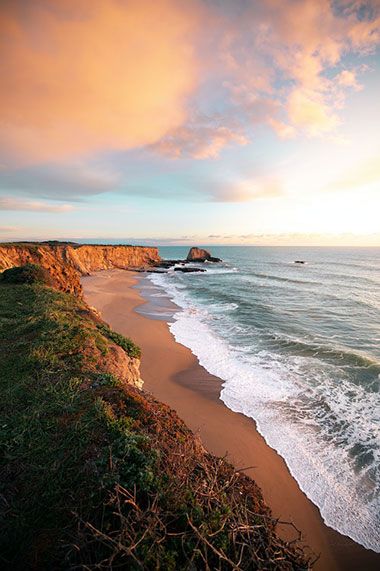 California coast Photo by Matt Jenssen / Pexels
|
 Photo by Vichie81 / Adobe Stock
Photo by Vichie81 / Adobe Stock Mauai, Hawaii
Mauai, Hawaii Portland Head Light, Maine
Portland Head Light, Maine Mackinac Island, Michigan
Mackinac Island, Michigan California coast
California coast